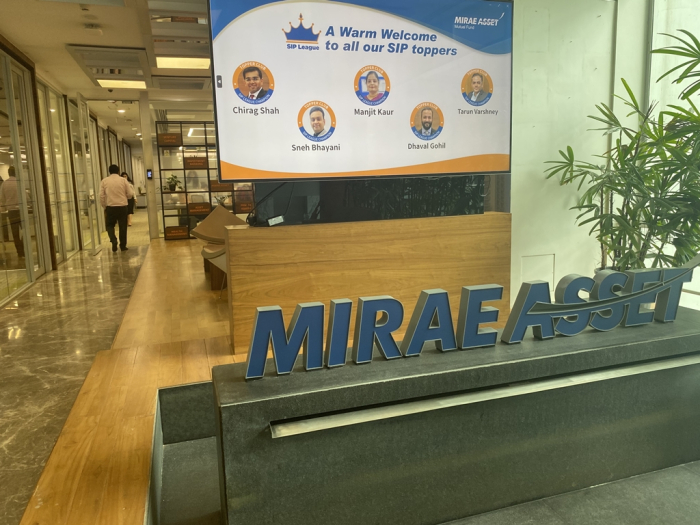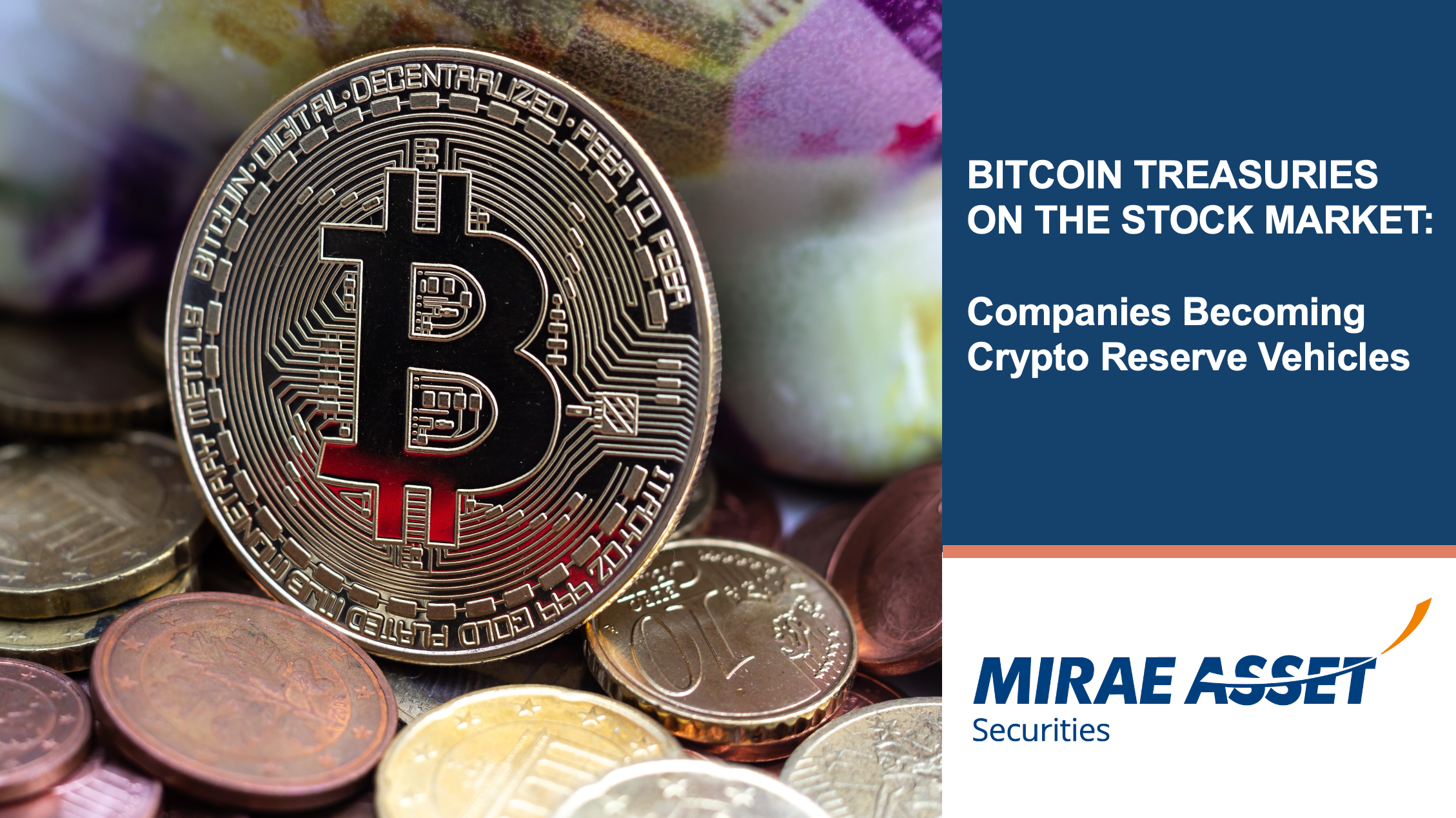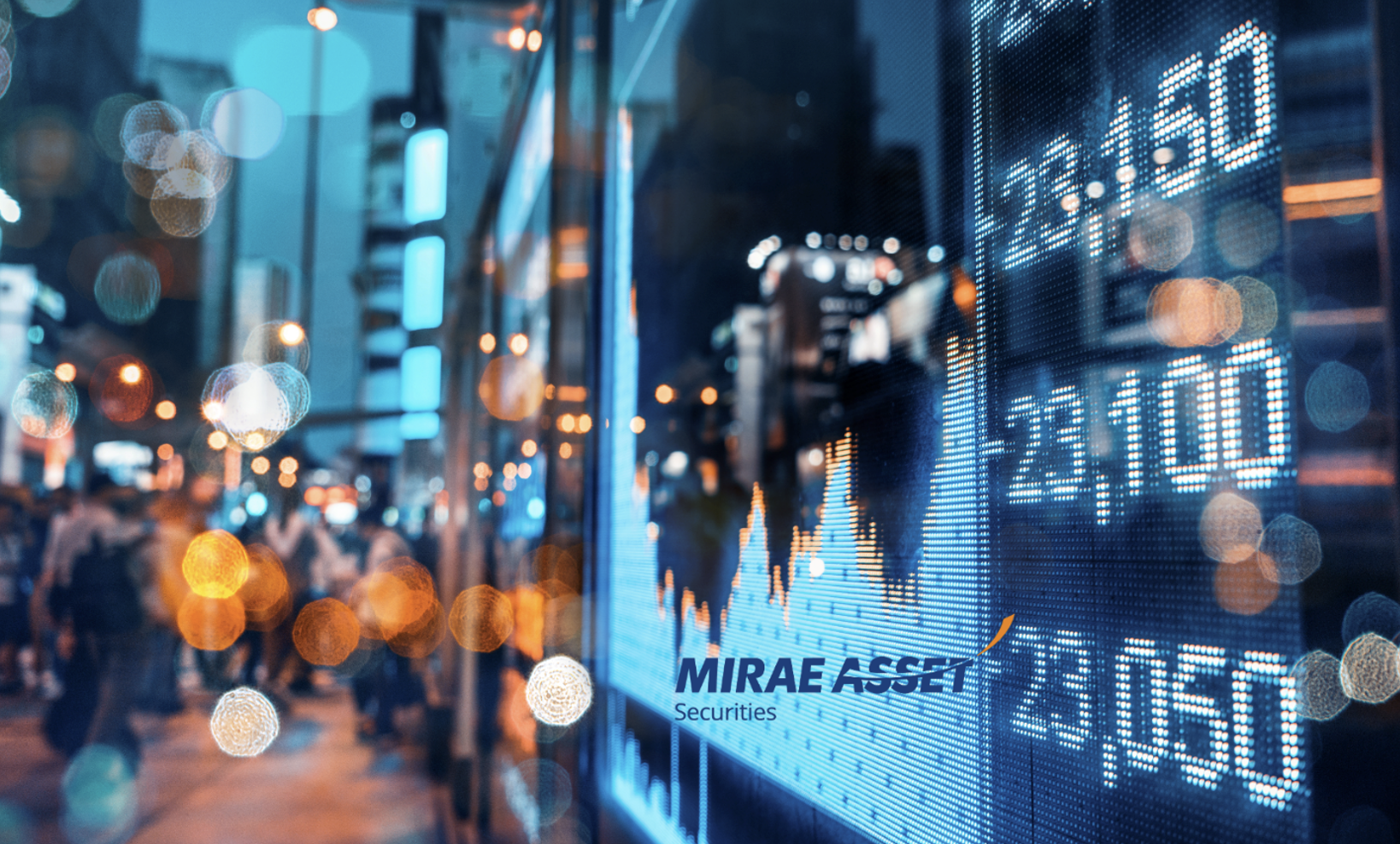What Central Clearing Means for the Treasury Market — And Why It Matters Now
The U.S. Treasury market is the cornerstone of global finance, providing benchmark rates and liquidity for institutions worldwide. But the market’s scale and structure have evolved beyond its infrastructure — and recent shocks have made clear it needs a modernization. Central clearing, long common in derivatives and equities, is now coming to Treasuries. This change isn’t just technical; it reshapes risk, behavior, and relationships across the financial system.
Why Central Clearing Is Happening Now
The short answer: resilience. Since 2014, the Treasury market has experienced several liquidity breakdowns — notably during the 2020 COVID crisis. When everyone rushed to sell, the market buckled, and the Federal Reserve had to step in. These events revealed structural fragility, especially in how trades are settled and counterparty risk is managed.
Meanwhile, Treasury issuance has exploded. With over $30 trillion in debt outstanding and daily trading volumes near $1 trillion, the scale now outstrips the balance sheet capacity of traditional intermediaries. Add in stricter capital rules for banks, and the system becomes more brittle. Regulators concluded that without changes, the market may not withstand future shocks.
In response, the SEC finalized rules in late 2023 mandating central clearing for a broad range of Treasury trades. These will take effect between 2026 and 2027, giving the market a few years to adapt — but requiring action now.
What Is Central Clearing?
In bilateral markets, each party bears the credit risk of its counterparty. Central clearing replaces that risk model: a clearinghouse, or central counterparty (CCP), sits between buyer and seller, guaranteeing trade completion even if one party defaults.
The CCP requires both sides to post margin and regularly adjusts exposures via daily settlement (variation margin). In Treasuries, this function will primarily be handled by the Fixed Income Clearing Corporation (FICC), though competitors like ICE and CME are entering the space.
Benefits include:
- Counterparty risk reduction: Firms no longer depend on individual counterparties’ solvency.
- Netting efficiency: Offsetting trades are collapsed, reducing capital and collateral burdens.
- Transparency: Regulators get a centralized view of exposures and flows.
- Crisis resilience: With standardized margining and default procedures, the system better absorbs shocks.
Who’s Affected — and How
This shift touches almost every major Treasury participant.
Dealers and Banks
Primary dealers, who already clear a portion of their repo activity, will now be required to centrally clear most interdealer and client-facing trades. That means technology upgrades, operational changes, and margining processes. But it also opens opportunities — especially in client clearing services. For many, this will accelerate the convergence of trading desks and clearing infrastructure.
Asset Managers and Hedge Funds
Many buy-side firms don’t currently clear. Under the new rules, if they trade with a clearing member — which includes nearly all major dealers — their trades must be centrally cleared. They can’t (and likely won’t) join FICC directly. Instead, they’ll access the CCP via intermediaries.
This changes how they manage counterparty exposure, liquidity, and financing. Margin becomes a routine part of operations, and trading relationships must be cleared through a sponsoring or agent-clearing member.
Prime Brokers and Intermediaries
Here lies the big inflection point. Prime brokers will become the gateway to central clearing for the broader market.
Two models will dominate:
- Sponsored clearing: The dealer sponsors the client into the clearinghouse, typically for repo and overnight activity.
- Agent clearing: The client trades with any counterparty but relies on a clearing broker to settle through the CCP.
As clearing expands, demand for these services will rise. Prime brokers that can offer seamless onboarding, efficient margin management, and strong operational support will become strategic partners — not just trade facilitators.
Trade-Offs and Market Impact
Central clearing is not without costs.
- Margin requirements: Participants must post initial and variation margin. For firms that previously didn’t post, this ties up cash or high-quality collateral.
- Operational lift: Systems must connect to CCPs, reconcile positions, and manage margin flows in real time.
- Concentration risk: While clearing reduces bilateral exposure, it concentrates systemic reliance in the CCP. Robust governance and supervision are critical.
There’s also the potential for market fragmentation if multiple clearinghouses split activity, reducing netting efficiency. But competition may also improve pricing and innovation, particularly around margin optimization and cross-product clearing.
Why This Matters to Institutional Clients
For institutional traders, the clearing mandate is not just a compliance task — it’s a market structure shift. How trades are cleared will increasingly determine how and with whom you trade. Execution and clearing strategies will become inseparable.
For firms that rely on financing — especially hedge funds and relative value strategies — central clearing will fundamentally reshape repo access, collateral costs, and trading agility. Margin efficiency, counterparty optionality, and seamless clearing will become competitive differentiators.
And that’s where prime brokers step in.
A Strategic Decision: Choosing the Right Clearing Partner
In the new market, prime brokers are more than facilitators — they’re infrastructure partners.
They help:
- Route trades efficiently to the CCP
- Optimize collateral and margin usage
- Manage reporting, reconciliations, and settlement flows
- Advise on structuring cleared vs. uncleared strategies
For clients, the choice of prime broker could impact both cost and flexibility. A well-integrated partner can improve market access, reduce friction, and future-proof operations ahead of the mandate.
What to Do Now
- Assess your exposure: Which of your trades will be subject to mandatory clearing?
- Engage clearing partners early: If you’re not already set up with a clearing broker, now’s the time.
- Build infrastructure: Ensure your systems can support margining, real-time trade flow, and CCP connectivity.
- Model margin impacts: Understand how clearing will affect your liquidity and financing operations.
- Monitor CCP landscape: As competition emerges, evaluate which clearinghouses align with your trading profile.
Conclusion
The central clearing mandate isn’t a detail, it’s a structural rewrite of the Treasury market. It promises to make the system safer and more scalable, but also demands new relationships, new systems, and new thinking.
Dealers will adapt. Regulators will oversee. But for investors and trading firms, success will hinge on preparation and partnership. With deadlines approaching, those who act early — and align with the right clearing infrastructure — will gain more than compliance. They’ll gain resilience, flexibility, and a strategic edge in a modernized market.
Mirae Asset Securities (USA) Inc. (“Mirae”) is providing this market commentary solely for the use of the institutional investors to whom this message is addressed. The commentary does not constitute “research” as defined by relevant FINRA or SEC rules, and thus the commentary was prepared by personnel who are neither engaged in the preparation of research reports nor are required to register as research analysts. In addition, the market commentary contained in this message is not subject to the independence and disclosure standards and requirements applicable to investment research reports. Please be advised that Mirae may trade the securities covered in the commentary on a principal basis (for itself) and on an agency basis (for clients). Such trading may be contrary to the commentary. THIS MATERIAL IS PROVIDED FOR INFORMATIONAL PURPOSES ONLY AND DOES NOT CONSTITUTE AN INVITATION OR OFFER TO SUBSCRIBE FOR OR PURCHASE ANY SECURITIES OR SERVICES MENTIONED. BY PROVIDING THIS MARKET COMMENTARY MIRAE DOES NOT ASSUME A DUTY TO UPDATE SUCH COMMENTARY IN THE FUTURE.
Asia’s Equity Markets in 2025: A Selective Approach for a Shifting Landscape
Asia’s markets in 2025 have been anything but uniform. Some are powering ahead on strong momentum, while others remain weighed down by structural challenges. For global investors, the lesson is straightforward: opportunity is abundant, but allocation must be selective.
Year-to-date, the divergence is striking. China’s CSI 300 is up about 17%, Korea’s KOSPI has surged more than 40%, Japan’s Nikkei has notched record highs, while India’s Nifty 50 is only modestly positive at +4–5%. The MSCI Asia ex-Japan index is up roughly 11% over the past year, underscoring that regional performance has hinged on where investors placed their bets.
Against this backdrop, we take stock of the forces shaping Asia’s equity markets through 2025 and look forward to 2026.
China: From Deep Value to Market Leadership
Chinese equities have been a standout in 2025. Entering the year, the CSI 300 and other benchmarks were at deeply depressed levels, the result of years of regulatory tightening, property sector weakness, and subdued consumer sentiment. Price-to-earnings multiples on leading companies had fallen to historic lows, especially in technology.
That set the stage for a sharp re-rating. By late September, the CSI 300 was up 17.4% YTD, making China one of the best-performing major markets globally. The rebound has been driven partly by earnings growth—Chinese internet and technology firms continued compounding revenue through the downturn—but more so by rising confidence that the worst is over.
Valuations, while improved, remain below global averages. This discount reflects lingering caution. Household spending is still tepid, weighed down by the real estate crisis and labor market concerns. Yet households hold record savings balances (over ¥160 trillion, or $22 trillion). Some of this liquidity has begun shifting into equities, adding fuel to the rally.
Policy has been supportive. Authorities have cut rates modestly, rolled out targeted credit support, and eased regulatory pressure on the private sector. These steps, coupled with signs of stabilization in housing, have helped restore investor confidence.
Risks remain: property debt overhang, external demand weakness, and the possibility of renewed U.S.–China trade friction. But with tech innovation driving growth—particularly in AI, semiconductors, and green energy—China looks set to remain a market leader if consumer spending finally unlocks.
Japan: Policy Shifts Revive a Sleeping Giant
Few markets have surprised more than Japan. After decades of being labeled stagnant, Japan’s equity market is now in renaissance. The Nikkei 225 has held at record highs in 2025, building on the breakout it achieved in 2024 when it finally surpassed its 1989 bubble-era peak.
The drivers are multiple. Corporate governance reform has gained momentum, with Tokyo Stock Exchange pressure prompting firms to improve capital efficiency, increase dividends, and buy back shares. Japan’s companies are sitting on enormous cash reserves, and they are finally putting them to work.
Currency has been a tailwind. The yen has remained weak, often around ¥150 per dollar, boosting exporters’ competitiveness and inflating overseas earnings. Inflation, long absent in Japan, has stabilized around 2–3%. The combination of a weaker yen and positive inflation has lifted corporate profitability to levels unseen in decades.
The Bank of Japan is cautiously normalizing policy. Yield curve control has been relaxed, allowing long-term rates to rise, and markets expect the eventual end of negative short-term interest rates. While a stronger yen would temper exports, the policy shift signals confidence in Japan’s recovery. Investors have so far welcomed this transition.
Japan is the world’s third-largest stock market, with over $6 trillion in capitalization, spanning world-class manufacturers, robotics leaders, and consumer brands. Foreign investors, long underweight Japan, are returning in size. With governance reform, corporate earnings strength, and a weak-yen boost, Japan’s market looks well-positioned through 2026—provided policy normalization remains measured.
India: Long-Term Growth, Short-Term Consolidation
India’s economic story remains compelling: 6–7% growth, a young and growing population, and a domestic demand engine unmatched globally. But Indian equities have taken a breather in 2025. The Nifty 50 is up just 4.5% YTD, lagging peers after years of strong gains that had stretched valuations.
Some consolidation was inevitable. Valuations were among the richest in emerging markets. Inflows also cooled as investors rotated toward cheaper opportunities in China and Korea. Global rate pressure has added another headwind.
Sector-specific issues have also weighed. The U.S. sharply raised H-1B visa fees in 2025, directly impacting India’s IT services giants. This increased costs and pressured margins for a sector central to India’s equity market. Yet over time, the policy could encourage more Indian tech talent to remain at home, strengthening the local startup ecosystem and fostering innovation.
Meanwhile, “China+1” strategies are bringing new foreign investment into Indian manufacturing, from electronics to renewable energy. Domestic infrastructure spending remains robust, and financial services continue to expand alongside rising middle-class incomes.
Risks include rich valuations, current account sensitivity to oil prices, and political uncertainty. But structurally, India remains one of the world’s strongest growth markets. For investors, the short-term pause may prove an entry point into a story still a decade or more behind China’s, with room for continued compounding.
South Korea: A Catch-Up Trade Comes Alive
South Korea has been the quiet success of 2025. Long burdened by the “Korea discount” and geopolitical overhangs, the KOSPI has surged more than 40% YTD, one of the strongest global equity performances.
The rally reflects a favorable setup. Valuations were cheap heading into 2025, with the KOSPI trading at low double-digit earnings multiples. At the same time, the technology cycle turned up. Memory chip prices stabilized, AI server demand accelerated, and automakers benefited from global EV adoption. With Samsung, SK Hynix, Hyundai, and LG at the core, Korea’s market is leveraged to precisely these global trends.
Policy has also stabilized. The Bank of Korea tightened early to control inflation, and with pressures now easing, rates are steady. Inflation has come under control without triggering recession, creating a supportive backdrop.
Geopolitically, Korea remains tightly aligned with the U.S., benefiting from investment flows into semiconductors and EV batteries. Korean firms are major players in U.S. supply-chain reshoring, which bolsters both revenues and market access.
Even after its rally, Korean equities remain inexpensive relative to peers. Corporate governance reform is progressing incrementally, and further improvement could narrow the discount. For investors, Korea offers exposure to cutting-edge industries at attractive valuations, making it one of Asia’s more compelling allocations into 2026.
Southeast Asia: Mixed but Resilient
Southeast Asia presents a patchwork of performance in 2025.
- Vietnam has been the standout, with the VN-Index rising roughly 25–30% YTD. Strong FDI inflows, expanding manufacturing, and the prospect of an MSCI upgrade from “frontier” to “emerging” status have driven momentum.
- Singapore has been steadier, with the Straits Times Index range-bound but supported by bank profitability and tourism recovery. Its dividend yields and safe-haven status keep it a core allocation.
- Indonesia remains driven by its vast domestic consumption base, even as commodity prices have moderated.
- Thailand and Malaysia have lagged somewhat, still sensitive to Chinese tourism and trade recovery.
- The Philippines has seen resilient growth but continues to wrestle with inflation and higher rates.
Across the region, demographics, digital adoption, and intra-Asian trade are the long-term drivers. ASEAN economies are increasingly attracting supply-chain investment as global companies diversify from China. For investors, country-by-country selectivity is crucial, but the region as a whole offers long-term growth optionality.
Outlook for 2026: Divergence and Opportunity
Looking into 2026, Asia will remain the world’s growth engine, but investors should expect divergence to persist.
- China: Continued momentum depends on whether consumer spending follows market sentiment. Valuations remain appealing, and policy support is likely to continue, but the property drag endures.
- Japan: A measured exit from ultra-loose policy is critical. If reforms continue and inflation holds near target, the equity renaissance may run further.
- India: Valuations are high, but the structural story remains among the best globally. Consolidation may set the stage for another leg higher.
- South Korea: Still inexpensive despite its rally. If governance reforms deepen, the discount could narrow further.
- Southeast Asia: Vietnam and Indonesia lead the growth story, while Singapore provides stability.
Global rates and U.S.–China relations will remain the key swing factors. If Western central banks cut rates in 2026, Asian markets should benefit from improved liquidity and a softer dollar. Meanwhile, intra-Asian trade and domestic demand will continue to expand, gradually reducing dependence on Western demand.
For investors, the message is clear: Asia is indispensable, but allocation must be selective. China and Korea offer recovery plays, Japan offers reform and income, India offers long-term compounding, and Southeast Asia offers frontier growth. Together, these markets form the foundation of a diversified portfolio positioned for the decade ahead.
Mirae Asset Securities (USA) Inc. (“Mirae”) is providing this market commentary solely for the use of the institutional investors to whom this message is addressed. The commentary does not constitute “research” as defined by relevant FINRA or SEC rules, and thus the commentary was prepared by personnel who are neither engaged in the preparation of research reports nor are required to register as research analysts. In addition, the market commentary contained in this message is not subject to the independence and disclosure standards and requirements applicable to investment research reports. Please be advised that Mirae may trade the securities covered in the commentary on a principal basis (for itself) and on an agency basis (for clients). Such trading may be contrary to the commentary. THIS MATERIAL IS PROVIDED FOR INFORMATIONAL PURPOSES ONLY AND DOES NOT CONSTITUTE AN INVITATION OR OFFER TO SUBSCRIBE FOR OR PURCHASE ANY SECURITIES OR SERVICES MENTIONED. BY PROVIDING THIS MARKET COMMENTARY MIRAE DOES NOT ASSUME A DUTY TO UPDATE SUCH COMMENTARY IN THE FUTURE.
ETFs Are Growing — And They’re Bringing Prime Brokers With Them
ETF issuers don’t just need execution anymore, they need infrastructure. As the U.S. ETF market pushes past $11 trillion and climbs into more complex territory — active, synthetic, crypto-linked, leveraged, etc. — prime brokers are becoming indispensable partners.
From block processing and financing to facilitating derivatives and helping to manage real-time risk, the role of the PB is no longer behind the scenes. It’s front and center! Here’s how demand is evolving, and why prime brokerage is quickly becoming the backbone of ETF innovation.
ETFs Aren’t Basic Anymore
ETF issuers used to simply track equity and fixed income benchmarks and call it a day. Now, they’re launching:
- Actively managed strategies that rebalance daily
- Leveraged/inverse funds requiring swap resets and margin calls
- Crypto-linked exposures relying on futures or proxies
- Synthetic ETFs that deliver returns via total return swaps
- Options-based income strategies
- Private credit or thematic bond portfolios
None of these are plug-and-play. They require prime brokerage plumbing — and lots of it.
Where Prime Brokers Fit In
Today’s ETFs need more than a ticker and a custodian. They need PBs for:
1. Clearing and Custody
Authorized Participants (“APs”) increasingly have to be self-clearing broker-dealers. Most aren’t. Issuers rely on PBs to route creations/redemptions through clearing-eligible pipes, safekeep assets, and settle trades without friction.
2. Securities Lending
Lending is no longer just a side gig — it is now a core yield. PBs source borrowers, handle recalls, and split fees, turning index ETFs into income generators. And for market makers? That borrow inventory means tighter spreads and deeper books.
3. Derivatives and Delta-One
Synthetic ETFs, levered ETFs, even covered call products — they all need swaps, futures, or options execution. PBs build and manage these exposures, collateralize them daily, and provide the leverage that drives the returns.
If the PB can’t model, fund, or monitor it, the ETF can’t exist.
4. Block Processing & Flow Management
Creation/redemption blocks require complex basket handling — often with illiquid securities or cross-border assets. PBs serve as the operational engine — coordinating APs, custodians, and counterparties in real-time.
5. Market Making and Seed Capital
New ETFs need an initial investment — called seed capital — before they can start trading. APs help by creating ETF shares and market makers provide liquidity and keep ETF prices close to the value of the underlying assets. Prime brokers support the process by offering tools like swaps and access to short positions. These roles are different but often work closely together, which can cause confusion. Today, many ETFs are launched using a 351 exchange, where a related party provides the initial assets in a tax-efficient way, reducing the need for outside seed capital.
6. Real-Time Risk & Margin
Whether it’s a 2x leveraged ETF or a crypto-linked synthetic, PBs monitor exposure tick-by-tick. Real-time dashboards, live VaR, and automated margining are now table stakes.
More Complexity = More Dependence
The ETF boom isn’t just a story of size — it’s about strategy diversification. And the further you get from basic beta, the more PB infrastructure you need:
- Active ETFs don’t always need a PB. Long-only strategies without derivatives or shorting typically rely on the custodian and broker dealers for executions and settlement during rebalances. PBs are more relevant for complex or fixed income strategies with liquidity challenges.
- Thematic ETFs may use PBs for access to niche or illiquid names. PBs can lend hard-to-find securities (generate income) and assist with complex redemptions (‘heartbeat trades’).
- Some crypto-linked ETFs hold spot assets like Bitcoin, while others gain exposure through futures, swaps, or proxy securities. Prime brokers manage the derivatives, post margin, and model risk on these often-volatile positions. Without prime broker support, these ETFs can’t operate effectively.
- Synthetic ETFs are wholly reliant on PB swaps. That includes exposure construction, collateral management, and regulatory compliance.
- Leveraged/Inverse ETFs must rebalance daily. That means daily swap resets, margin calls, and short inventory sourcing — all handled by the PB.
Infrastructure Is Scaling
To keep up, PBs are upgrading each of the following:
- Cloud-native tech-stacks for real-time processing and position visibility
- Collateral optimization tools for efficient margin and financing
- Swap desks with ETF-specific capabilities: faster onboarding, tighter pricing, and risk-managed limits
- Options infrastructure for income and volatility strategies (covered calls, buffers)
- ETF launch platforms to support seed capital, distribution, and end-to-end ops
The goal? Not just to support ETFs — but to accelerate them and keep them nimble.
Beyond Ops: Launch, Seed, Scale
Prime brokers also play a key role in:
Launching New ETFs
Seed capital matters. So does AP onboarding. PBs help sponsors get to market with initial assets, inventory, and liquidity partners lined up. The right PB can mean the difference between a smooth debut and a silent one.
Market Structure Integration
PBs work directly with APs, exchanges, and trading desks to streamline flows. They know how to move risk efficiently — from creation unit to street — which keeps spreads tight and pricing clean.
Operational Stability
In volatile markets, speed and accuracy are survival tools. Prime brokers give ETF issuers confidence that their flows will settle, their trades will clear, and their exposures will be covered — even when volumes surge.
Global Reach, Global Needs
While the U.S. leads ETF innovation, global growth is accelerating:
- Europe: Synthetic ETFs, cross-listed UCITS products, and swap exposure demand prime brokers with multi-jurisdictional clearing and collateral capabilities.
- Asia: Record inflows and complex access products (e.g. Saudi ETFs listed in Hong Kong) require cross-border structuring, futures financing, and local regulatory fluency.
ETF sponsors with global ambitions need PBs with global pipes.
The Bottom Line: ETFs Need Partners, Not Just Pipes
ETF issuers are doing more — and depending more — than ever on broker support. Whether it’s launching a synthetic clean energy ETF, managing short exposure in a thematic fund, or rebalancing a daily-leveraged biotech product, the PB isn’t optional. It’s foundational.
Issuers aren’t just looking for service providers — they want strategic partners who can:
- Operate across asset classes and time zones
- Scale operationally with fund growth
- Enable liquidity, not just react to it
- Handle complexity without sacrificing control
That’s the modern ETF value chain — and it all runs through (and supported by) the prime broker.
Mirae Asset Securities (USA) Inc. (“Mirae”) is providing this market commentary solely for the use of the institutional investors to whom this message is addressed. The commentary does not constitute “research” as defined by relevant FINRA or SEC rules, and thus the commentary was prepared by personnel who are neither engaged in the preparation of research reports nor are required to register as research analysts. In addition, the market commentary contained in this message is not subject to the independence and disclosure standards and requirements applicable to investment research reports. Please be advised that Mirae may trade the securities covered in the commentary on a principal basis (for itself) and on an agency basis (for clients). Such trading may be contrary to the commentary. THIS MATERIAL IS PROVIDED FOR INFORMATIONAL PURPOSES ONLY AND DOES NOT CONSTITUTE AN INVITATION OR OFFER TO SUBSCRIBE FOR OR PURCHASE ANY SECURITIES OR SERVICES MENTIONED. BY PROVIDING THIS MARKET COMMENTARY MIRAE DOES NOT ASSUME A DUTY TO UPDATE SUCH COMMENTARY IN THE FUTURE.
Mirae Asset rises to 12th-largest ETF manager with $141 billion in assets
Its growth in Asia is noteworthy, with its Indian unit expanding the fastest among its global affiliates
South Korea’s leading asset manager Mirae Asset Financial Group has emerged as the world’s 12th-largest exchange-traded fund (ETF) manager with over 200 trillion won ($141 billion) in net asset value (NAV). According to Mirae Asset Securities Co.'s overseas asset management affiliate Mirae Asset Global Investments Co. on Wednesday, the group operates 624 ETFs managing $141 billion across 13 countries as of the end of November. Mirae Asset doubled its ETF assets in just three years. In 2021, it managed 100 trillion won in NAV globally. The company attributed its rapid growth to its aggressive mergers and acquisitions strategy, through which it has established a broad global network.
Mirae Asset entered the ETF market in 2006 under the leadership of Chairman Park Hyeon Joo, launching ETF products under the TIGER brand in Korea. As of the end of November, TIGER ETFs held a 36% market share in the domestic ETF market.

Park, founder and chairman of the group, assumed the group’s global investment and strategy officer (GISO) role in 2018 to lead Mirae Asset’s global expansion.
AGGRESSIVE M&As
Park has pushed the investment firm’s global expansion through M&As. Under his leadership, Mirae Asset Global Investments acquired Canada’s Horizons ETFs in 2011, which was rebranded as Global X Investments Canada Inc.
Global X Canada has become the fourth-largest ETF manager in the country, with a focus on income-generating ETFs that periodically pay out cash. In 2018, the company acquired the US-based Global X ETFs for $488 million. Global X ETFs, known for its strength in thematic ETFs, has seen a fivefold rise in assets under management since then.

Mirae Asset also bought Sydney-based ETF Securities, which accounts for 4% of Australia’s ETF market, for 120 billion won ($95.2 million) and later rebranded it as Global X ETFs Australia.
Last year, Mirae Asset bought the UK’s leading ETF manager Goldenberg Hehmeyer LLP (GHCO) for $35 million to step up its ETF services in Europe, the world’s second-largest after the US.
RAPID GROWTH IN INDIA
Mirae Asset's growth in Asia is noteworthy. It established Mirae Asset Global Investments’ first global affiliate in Hong Kong in December 2003. In 2011, it became the first Korean asset management firm to list an ETF on the Hong Kong Stock Exchange. Mirae Asset has also established Global X Japan, a joint venture with Daiwa Securities, in 2019.

Mirae Asset’s Indian subsidiary is one of its fastest-growing affiliates worldwide. Mirae Asset Securities established its India operations in 2018 – Korea’s first brokerage to do so in the country.
Mirae Asset continues to blaze trail in global investments
기자명 Tim Kim Published 2025.02.03 15:29
Korean financial giant vows to keep forging ahead in overseas markets

Pictured is Four Seasons Hotel Sydney, which is owned by South Korean financial conglomerate Mirae Asset Group. [Photo courtesy of Mirae Asset Group]
South Korea’s Mirae Asset Group noted on Feb. 3 that the financial conglomerate would continue to blaze a trail in global investments down the road. The Seoul-based outfit vows to keep finding alternative investment opportunities as part of efforts to become a global investment bank like Goldman Sachs and JP Morgan. When it comes to alternative investments, Mirae Asset has been second to none among Korean competitors and is regarded as one of the top Asian players. Now, the entity hopes to forge a path to become a world-class leader. For instance, Mirae Asset has taken over such prestigious hotels as the Four Seasons and Fairmont.
In addition, the corporation has made strategic investments in many innovative firms, including SpaceX and X, which is formerly known as Twitter.
Most recently, Mirae Asset launched Mirae Asset Sharekhan in India, with a bold vision to become one of the country’s top five brokerage houses within five years. The growth of the group is underpinned by its two representative subsidiaries of Mirae Asset Securities and Mirae Asset Global Investments.
The former is a top-tier brokerage in the South Korean market with the country’s largest equity capital. The latter manages the nation’s biggest Nasdaq 100 ETF under the TIGER brand.
Mirae Asset founding Chairman Park Hyeon-joo now serves as the group’s Global Strategy Officer. [Photo below courtesy of Mirae Asset Group]
Visionary leader

Observers point out that the exponential growth of Mirae Asset Group has been boosted by its visionary founding Chairman Park Hyeon-joo, who also works as the entity’s Global Strategy Officer. Under the stewardship of Chairman Park, Mirae Asset has been proactive in diversifying portfolios, mitigating market volatility, and hedging against inflation, which are the features of global top IBs. The results have been impressive.
For instance, the Four Seasons Sydney, purchased in Sept. 2013, has appreciated by 79.3 percent and is now valued at about AUD 610 million ($375 million) as of Sept. 2024.
Similarly, the Fairmont Orchid in Hawaii, acquired in May 2015, has increased in value by 68.9 percent, reaching an estimated $ 380 million.
Given the complexities of valuing alternative assets compared to traditional stocks and bonds, Mirae Asset claims that the firm’s successful investments in this sector amply demonstrate its expertise and strategic acumen as a global IB.
Since 2022, the company has invested more than 800 billion won ($550 million) in such high-tech firms as SpaceX, X, and AI startup xAI.
As of Nov. 2023, the valuations of these investments had increased by around 1.5 times, with expectations for further growth, according to Mirae Asset.
M&A strategy for global expansion
Watchers pick Mirae Asset’s aggressive approach to mergers and acquisitions (M&A) as a key driver of its global competitiveness. Chairman Park is famous for having long championed the idea that Korean firms should create national wealth by expanding overseas and entering global markets through bold M&A activities. Currently serving as the Global Strategy Officer, he continues to oversee significant M&As and equity investments.
Driven by his strategic vision and commitment to expansion, Mirae Asset has made several crucial acquisitions over the past several years to strengthen its global presence.
In 2018, the company gobbled up Global X, a leading U.S.-based thematic ETF provider. This was followed by the acquisition of Global X Australia in 2022 and Australian robo-advisor Stockspot in 2023. Plus, Mirae Asset acquired GHCO, a European ETF market-making specialist. In India, the corporation completed the purchase of Sharekhan late last year to launch Mirae Asset Sharekahn in the potential-loaded South Asian country. With this acquisition, Mirae Asset expects that its global business will generate an additional 100 billion won ($68 million) in annual profit.
By allocating 40 percent of its equity capital to overseas operations, Mirae Asset projects its global business to chalk up 500 billion won ($340 million) in pre-tax profits beginning in 2027.
Over the past 21 years, Mirae Asset has successfully expanded its international footprint, now operating 47 overseas subsidiaries and offices across 19 regions. “With 21 trillion won ($14 billion) in equity capital and 840 trillion won ($570 billion) in global client assets under management, Mirae Asset has established itself as Asia’s premier investment bank,” a Mirae Asset official said.
“Looking ahead, we are preparing to ascend to the ranks of the world’s top-tier investment banks, continuing our trajectory of innovation, strategic expansion, and long-term value creation.”
Mirae Asset Group strives to establish itself as global investment bank powerhouse
By Lee Yeon-woo Posted : 2025-01-22 16:03
Mirae Asset Group is striving to become a global investment powerhouse under the leadership of its founder, Chairman Park Hyeon-joo, through active investments in global alternative assets and innovative technologies.
Since 2022, the group has invested over 80 billion won ($55.6 million) in SpaceX, X (formerly Twitter) and xAI. These investments have reportedly grown by approximately 1.5 times in market value and are expected to continue increasing. The group has also achieved significant returns from investments in global alternative assets, such as luxury hotels in major tourist destinations. For instance, Four Seasons Hotel Sydney was valued at approximately 610 million Australian dollars ($381.8 million) as of September 2024, marking a 79.3 percent increase since its initial investment in 2013. Similarly, Fairmont Orchid in Hawaii has reached a valuation of 380 million dollars, reflecting a 68.9 percent increase since 2015. Mirae Asset Group is also gaining a competitive edge through bold mergers and acquisitions (M&A). "Korean companies should focus on creating national wealth through overseas operations and actively pursue M&As to establish a strong presence in the global market," Park said.
Under Park’s leadership as global strategy officer, the group has expanded overseas, acquiring key entities such as Global X, a leading U.S. thematic exchange-traded funds (ETFs) provider, Australian asset management firm Global X Australia, Australian robo-advisory company Stockspot and GHCO, a European ETF market-making specialist. As a result, Mirae Asset Group has built the largest global network among Korean financial firms, operating 47 overseas subsidiaries and offices across 19 regions over 21 years of international expansion. "With 21 trillion won in equity capital and 840 trillion won in global client assets, we aim to evolve from Asia’s leading investment bank into a top-tier global investment bank," a Mirae Asset Group official said.







